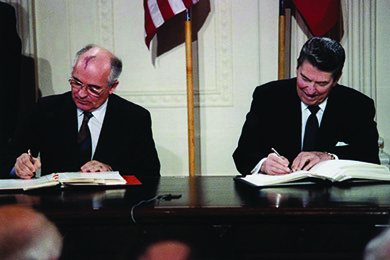| << Chapter < Page | Chapter >> Page > |

You can view President Reagan delivering one of his most memorable addresses in 1987. Standing in front of the Brandenburg Gate in West Berlin, he called on General Secretary Gorbachev to “tear down this wall.”
Confident they could win back the White House, Democrats mounted a campaign focused on more effective and competent government under the leadership of Massachusetts governor Michael Dukakis. When George H. W. Bush, Reagan’s vice president and Republican nominee, found himself down in the polls, political advisor Lee Atwater launched an aggressively negative media campaign, accusing Dukakis of being soft on crime and connecting his liberal policies to a brutal murder in Massachusetts. More importantly, Bush adopted a largely Reaganesque style on matters of economic policy, promising to shrink government and keep taxes low. These tactics were successful, and the Republican Party retained the White House.
Although he promised to carry on Reagan’s economic legacy, the problems Bush inherited made it difficult to do so. Reagan’s policies of cutting taxes and increasing defense spending had exploded the federal budget deficit, making it three times larger in 1989 than when Reagan took office in 1980. Bush was further constrained by the emphatic pledge he had made at the 1988 Republican Convention—“read my lips: no new taxes”—and found himself in the difficult position of trying to balance the budget and reduce the deficit without breaking his promise. However, he also faced a Congress controlled by the Democrats, who wanted to raise taxes on the rich, while Republicans thought the government should drastically cut domestic spending. In October, after a brief government shutdown when Bush vetoed the budget Congress delivered, he and Congress reached a compromise with the Omnibus Budget Reconciliation Act of 1990. The budget included measures to reduce the deficit by both cutting government expenditures and raising taxes, effectively reneging on the “no new taxes” pledge. These economic constraints are one reason why Bush supported a limited domestic agenda of education reform and antidrug efforts, relying on private volunteers and community organizations, which he referred to as “a thousand points of light,” to address most social problems.
When it came to foreign affairs, Bush’s attitude towards the Soviet Union differed little from Reagan’s. Bush sought to ease tensions with America’s rival superpower and stressed the need for peace and cooperation. The desire to avoid angering the Soviets led him to adopt a hands-off approach when, at the beginning of his term, a series of pro-democracy demonstrations broke out across the Communist Eastern Bloc.
In November 1989, the world—including foreign policy experts and espionage agencies from both sides of the Iron Curtain—watched in surprise as peaceful protesters in East Germany marched through checkpoints at the Berlin Wall. Within hours, people from both East and West Berlin flooded the checkpoints and began tearing down large chunks of the wall. Months of earlier demonstrations in East Germany had called on the government to allow citizens to leave the country. These demonstrations were one manifestation of a larger movement sweeping across East Germany, Poland, Hungary, Czechoslovakia, Bulgaria, and Romania, which swiftly led to revolutions, most of them peaceful, resulting in the collapse of Communist governments in Central and Eastern Europe.

Notification Switch
Would you like to follow the 'U.s. history' conversation and receive update notifications?